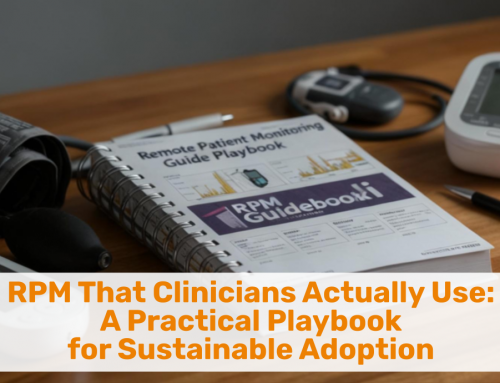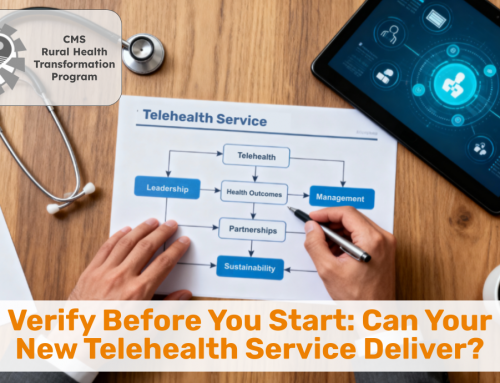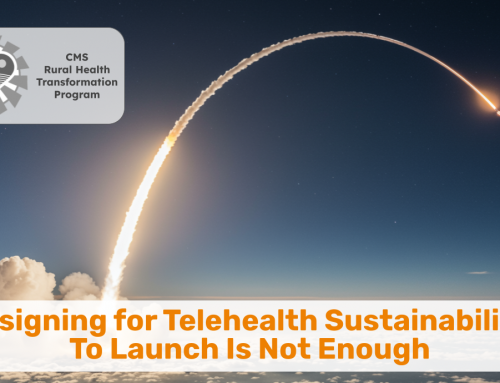The problem in healthcare is not the lack of innovation.
The problem is the s-l-o-w pace of innovation adoption.
That’s a theme I’ve returned to again and again in my articles on digital health transformation. Healthcare doesn’t suffer from a lack of ideas — it suffers from an inability to systematically adopt and scale them.
Over the past few years, I’ve written extensively about this adoption gap and proposed frameworks like “From Idea to Validation” and described the need for organizations to create and use an Innovation Prioritization Funnel, and the importance of clinician engagement. These articles all outlined a process-driven approach to selecting and implementing innovations with intention and impact.
But there’s one question that came up in my conversations with healthcare leaders:
How do we know how good our organization is adopting innovation?
What are our gaps?
That question led me to develop the Ingenium Innovation Maturity Model — a simple, structured way to assess how prepared a healthcare organization is to take innovation seriously, execute reliably, and sustain outcomes over time.
The Challenge: Measuring Innovation Readiness
Over the past 25 years in healthcare, I’ve seen numerous promising pilots that never scaled. Transformative technologies that stalled after enthusiastic beginnings. Ready-to-use innovations that were missed, because nobody was looking — or if they saw it, they didn’t know how to make use of it.
But more often than not, dedicated innovation teams ran out of momentum because the broader organization wasn’t equipped to change (including two failed attempts at the Mayo Clinic to create and disseminate innovation).
Often, the issue isn’t the innovation itself — it’s the environment, or rather the culture. If there’s no innovation strategy, no innovation governance, no engagement from clinicians or leadership, then even the most well-designed, most innovative solution is likely to not make it past its first implementation anniversary (which is a shame and also a lot of wasted money).
Our Innovation Maturity Model is designed to make these invisible obstacles visible. It enables leadership teams to diagnose where they are today, align their ambitions with their capabilities, and chart a path toward becoming an organization where innovation doesn’t just happen — but where it thrives.
The 7 Levels of Innovation Maturity
Like the Telehealth Maturity Model I introduced years ago, this new model is structured across seven levels of maturity. Each level represents a fundamentally different relationship with innovation:
Level 0 – Ad hoc: Innovation is largely absent. If it occurs, it is accidental, isolated, and unsupported. The rogue efforts of innovative disruptors that soon will leave the organization, frustrated. There are no defined goals, processes, or leadership involvement.
Level 1 – Aware: The organization recognizes the value of innovation and may include it in vision statements or leadership talking points. But there is no consistent support structure to act on those intentions. It is good intention with no backing.
Level 2 – Reactive: Innovation efforts are triggered by specific needs or external pressures (e.g., a crisis, a grant opportunity). Projects are pursued on a case-by-case basis, often without coordination or follow-through. It’s more about fixing crisis then taking advantage of innovation.
Level 3 – Supported: At this level, finally some structures are in place to enable and support innovation: internal champions are recognized, basic funding is provided for innovation projects, and innovation pilot projects are launched. There is growing leadership support, but innovation is still not fully aligned with strategic goals.
Level 4 – Aligned: Now, Innovation efforts are clearly tied to organizational priorities. Processes exist for identifying and managing initiatives. There is coordination across departments, and innovation is integrated into planning and budgeting cycles. This is the initial target level for most organizations we help to improve their organizational innovation maturity.
Level 5 – Strategic: Here, innovation is proactively promoted and led by dedicated teams and governed by strategic priorities. Resources, roles, and processes are in place to support not just experimentation, but adoption, scaling, and sustainability.
Level 6 – Embedded: Innovation is a core organizational capability, part of the DNA. It’s integrated into daily operations, supported by data, and driven by a culture that rewards curiosity, learning, and continuous improvement. Everyone — leaders, clinicians, staff — is empowered to innovate.



The 12 Dimensions of Innovation Maturity
To assess innovation readiness, the model evaluates organizations across 12 dimensions — each representing a critical component of the environment needed to support adoption.
These dimensions fall into three overarching themes: Strategic Foundations, People & Culture, and Execution Infrastructure.
Strategic Foundations
1. Innovation Strategy: Is there a clear, intentional vision for innovation? Is innovation linked to broader organizational goals? This dimension looks at whether innovation is reactive or proactive—and how well it is embedded in strategic planning.
2. Innovation Scanning: Does the organization actively seek out promising ideas, technologies, or practices from inside and outside its walls? This includes environmental scanning, vendor engagement, and collaboration with innovators.
3. Problem Definition: Are problems clearly and systematically defined before solutions are explored? Innovation fails when the wrong problems are tackled—or when symptoms are mistaken for root causes.
4. Prioritization: Is there a method to evaluate, select, and sequence innovation opportunities? Are decisions made based on impact, feasibility, alignment, and need?
People & Culture
5. Clinician Involvement: Are clinicians engaged in innovation design and decision-making? Do they have a voice in which problems get prioritized, how solutions are implemented, and how workflows evolve?
6. Leadership Engagement: Is executive leadership actively involved in championing innovation—not just funding it, but removing barriers, setting expectations, and modeling a growth mindset?
7. Culture & Mindset: Does the organization value learning, experimentation, and risk-taking? Are there mechanisms to encourage innovation across roles and disciplines?
Execution Infrastructure
8. Process Discipline: Are there consistent processes for moving from idea to pilot to implementation? Or are teams reinventing the wheel every time?
9. Integration with Operations: Can innovations scale beyond pilots? Are they operationalized into practice, integrated with clinical and administrative workflows?
10. Change Management: Does the organization proactively manage the people side of change—including communication, training, feedback, and support?
11. Performance Management: Are innovations evaluated based on defined metrics? Does the organization track impact, surface insights, and use data to guide future investments?
12. Sustainability: What happens after launch? Are successful innovations maintained, evolved, and owned by permanent teams—or do they fade as attention shifts?
A Model for Dialogue, Not Judgment
The Innovation Maturity Model isn’t a tool for grading organizations — rather it’s a framework for structured reflection, assessing “You are here” and pin-pointing rather quickly what you need to do to get “there”.
The assessment and model gives leadership teams, innovation councils, and clinical champions a common language. It helps them ask better questions: Where are we ready to grow? What’s holding us back? What needs to change before we can scale this solution system-wide?
What’s Next
Over the coming weeks, I’ll share a deeper look at each of the 7 levels and the 12 dimensions — how they show up at different maturity levels, and what it takes to advance.
In the meantime, if you’re working to accelerate innovation adoption in your organization, you can revisit these foundational articles:
Each outlines a component of the “how.” The Innovation Maturity Model will help you assess the how-ready.
Because real innovation isn’t about chasing the next big thing—it’s about building the capacity to solve what matters, again and again.
Ready to assess your organization’s Innovation Maturity? For the remainder of 2025 we are giving away one free Innovation Maturity Assessment and consultation per quarter. Let’s talk!








To receive articles like these in your Inbox every week, you can subscribe to Christian’s Telehealth Tuesday Newsletter.
Christian Milaster and his team optimize Telehealth Services for health systems and physician practices. Christian is the Founder and President of Ingenium Digital Health Advisors where he and his expert consortium partner with healthcare leaders to enable the delivery of extraordinary care.
Contact Christian by phone or text at 657-464-3648, via email, or video chat.






